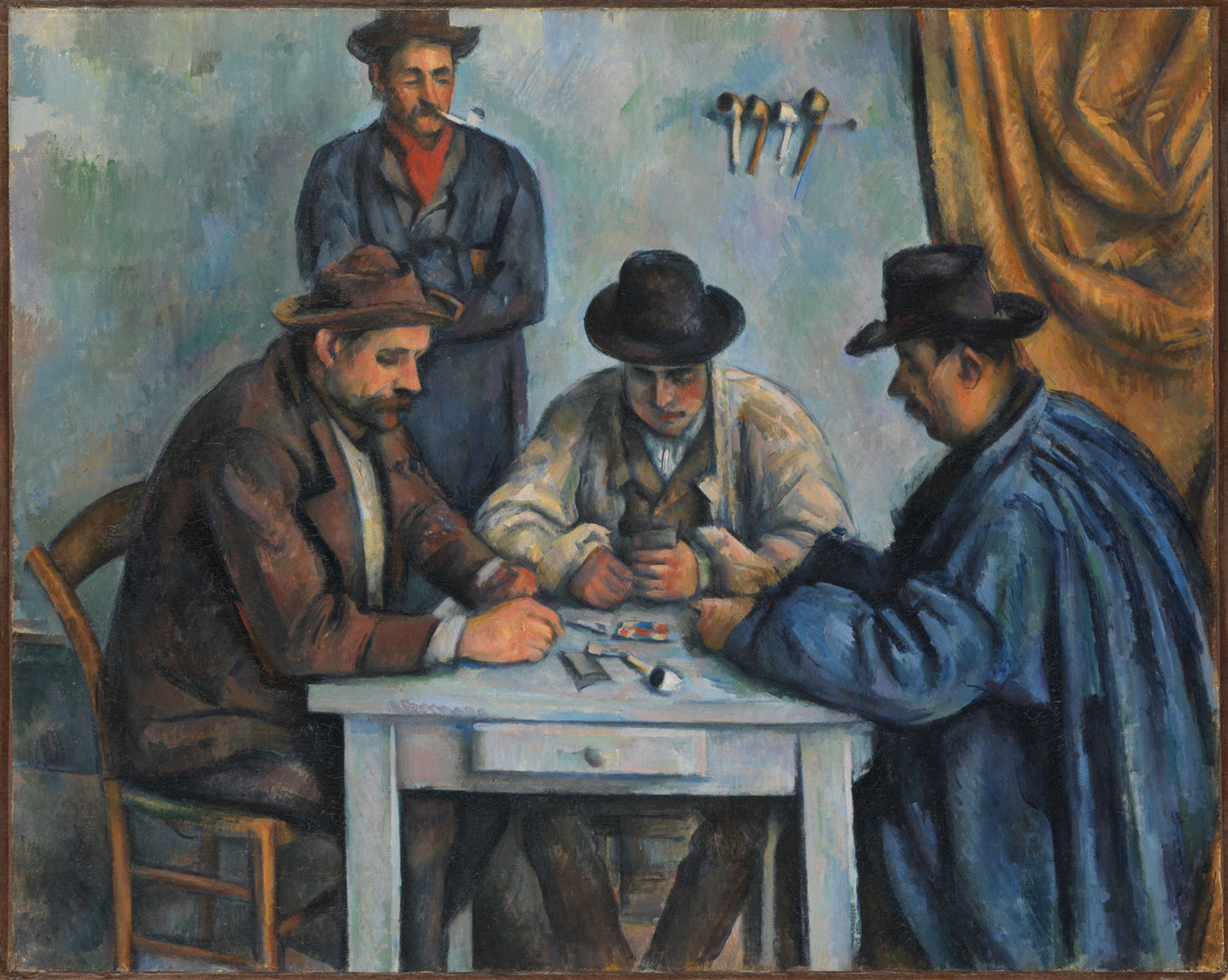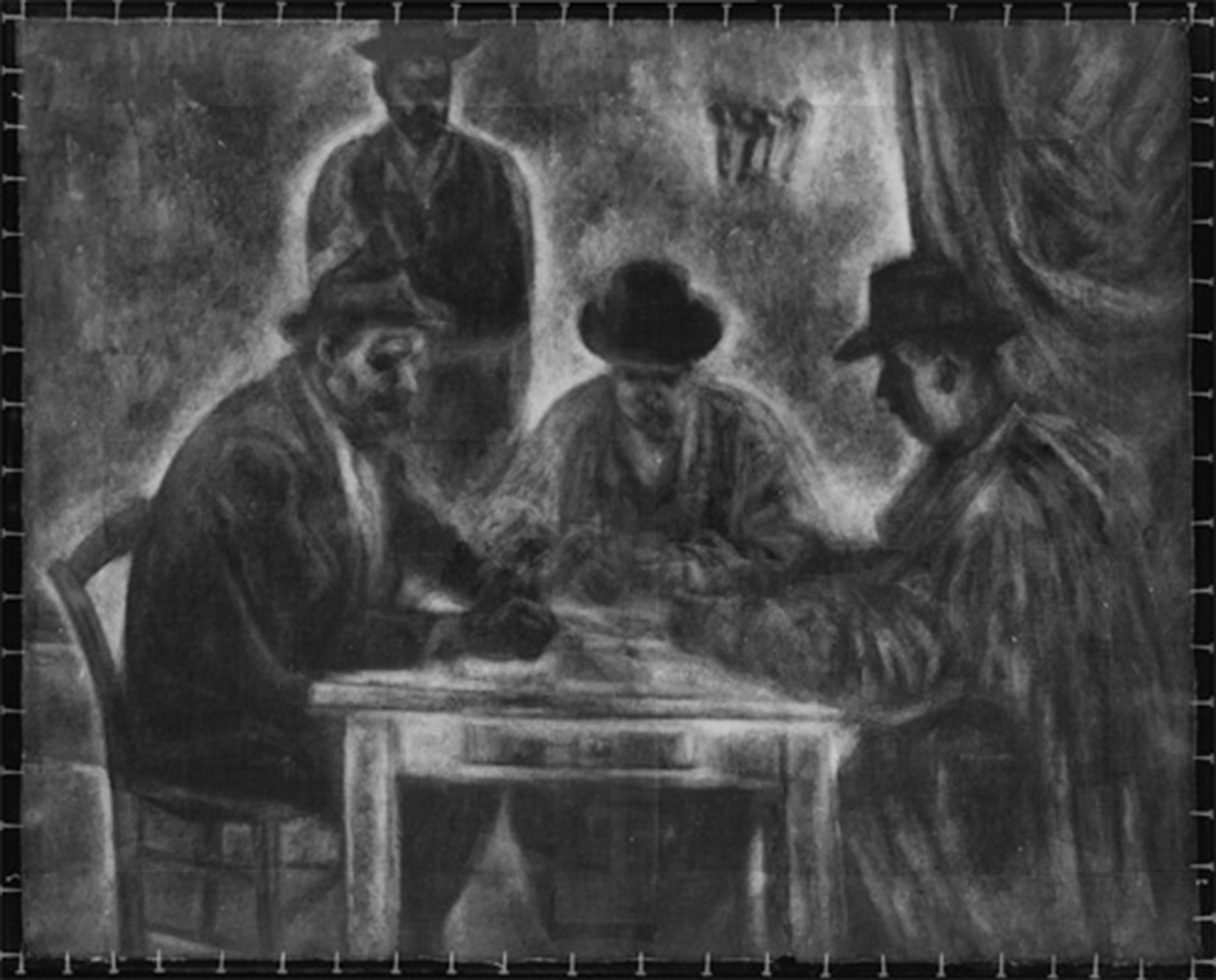Cezanne's Card Players

Paul Cézanne (French, 1839–1906). The Card Players, 1890–92. Oil on canvas, 25 3/4 x 32 1/4 in. (654 x 81.9 cm). The Metropolitan Museum of Art, New York, Bequest of Stephen C. Clark, 1960 (61.101.1)
In 2011 the Museum hosted the exhibition Cézanne's Card Players, organized in collaboration with the Courtauld Gallery, which brought together for the first time works from Cézanne's series of Card Player paintings together with their associated oil studies and drawings. Cézanne’s five paintings of Card Players are generally acknowledged as a series of masterpieces, but little is known of their creation: none has been dated definitively, and while there is broad consensus that the multi-figure compositions (now housed at the Metropolitan and the Barnes Foundation) preceded the two-figure paintings (Musée d’Orsay, Courtauld Gallery, and Private Collection), the chronological order within both sub-groups has been the subject of extensive connoisseurial and stylistic debate. In preparation for the exhibition we worked with our colleagues at the Courtauld to investigate the development of the series of Card Player paintings through technical examination.

Using X-radiography and infrared reflectography in addition to surface examination, we were able to demonstrate that, contrary to most scholarly opinions, the smallest paintings came first. Cézanne worked from studies of individual models—laborers at the Jas de Bouffon, the estate he inherited from his father. The Metropolitan's canvas shows how he struggled to assemble these figures around a small table. Note, for example, the absent hand of the man on the right in the Metropolitan's painting, a feature left unresolved in his preparatory drawings, and the "haloes" around the figures seen in the X-radiograph that chart the numerous adjustments on his canvas as he created his now-iconic composition of Card Players.